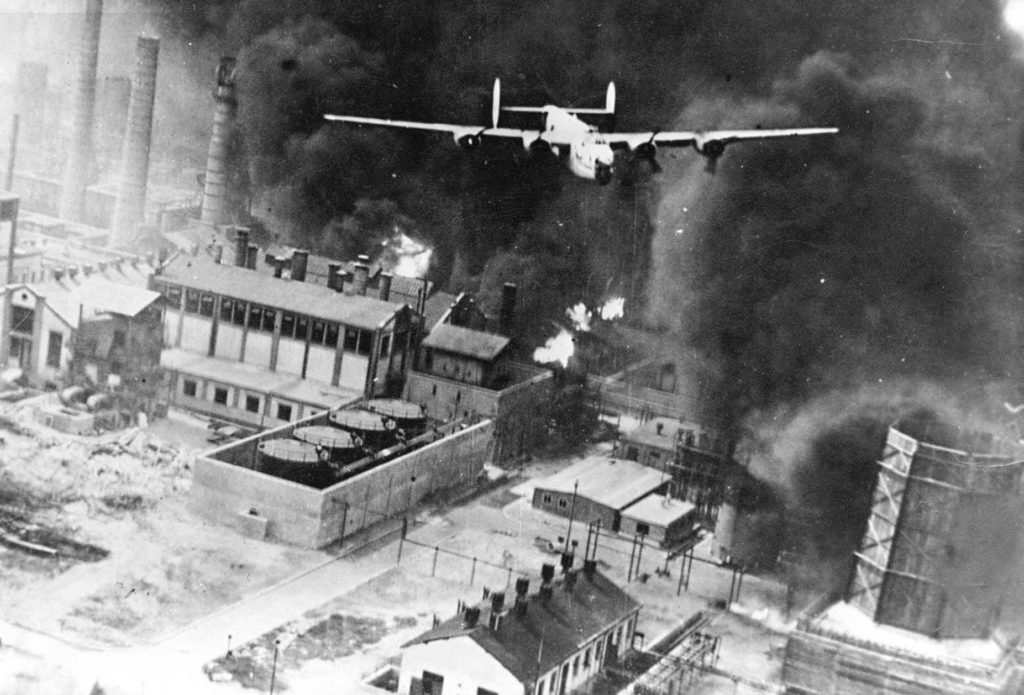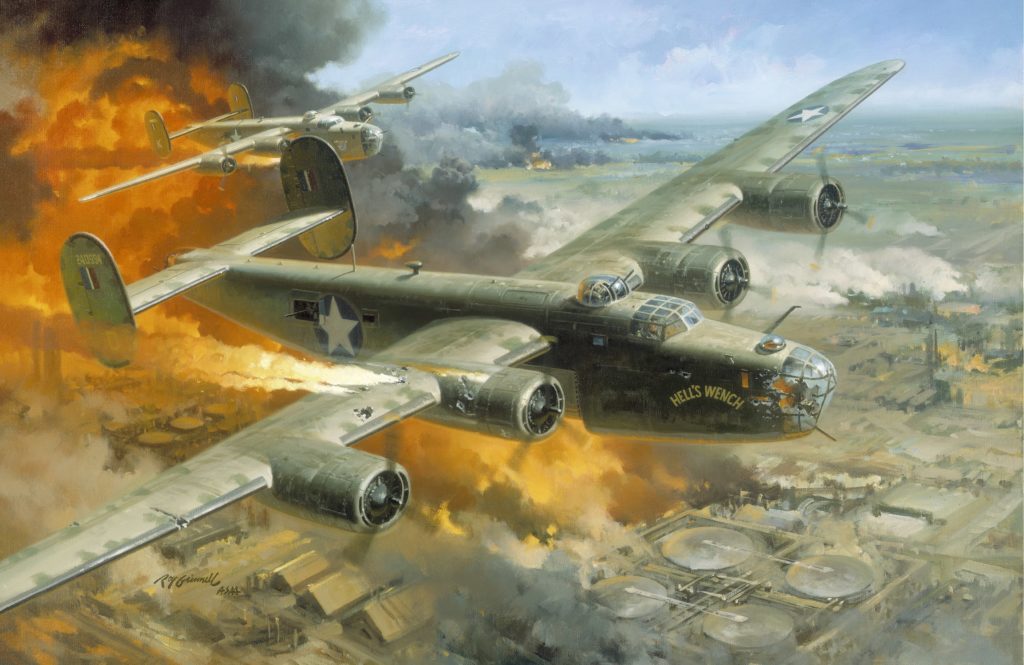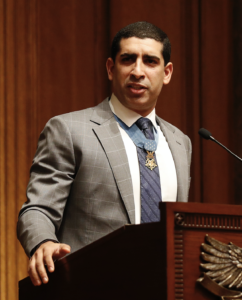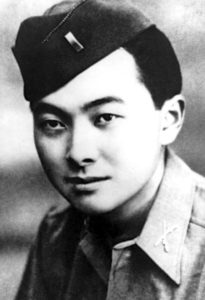A Daring Plan
With limited domestic petroleum production of its own, Nazi Germany was highly dependent upon oil production and refining facilities outside its borders. One of the most important oil sites were the seven refineries located near Ploesti, Romania. These refineries provided almost a third of all of Nazi Germany’s oil.
Given that petroleum was essential to the German war effort, the Allies saw Ploesti as a key strategic target to attack with its growing heavy bomber fleet in Europe. Colonel Jacob Smart of the US Army Air Force (USAAF) developed an audacious plan – code-named Operation Tidal Wave – that would utilize B-24 Liberator bombers from five different bomb groups. Flying out of bases near Benghazi, Libya, these heavy bombers would fly 1,350 miles across the Mediterranean and the Balkans in two formations that would hit the various oil production sites with their bomb loads. Seeking to surprise the defenders, the heavy bombers would arrive over the target at low level – a significant deviation from standard high-altitude doctrine.
On August 1, 1943, 1,751 Army air force personnel aboard 177 B-24 Liberators lifted off their runways, assembled into formation, and headed for their targets. Given the length of the mission, there would be no escorting fighters on this raid.
The Axis Awaits
The Americans were expecting to encounter stiff opposition in the region. But what they ultimately faced was far worse than they had even feared. An earlier, smaller attack in June of 1942 had alerted the Germans and Romanians to the threat they faced at this critical facility. In addition, the German codebreakers had deciphered communications regarding the attack. Forewarned about the coming American attack, the Axis augmented their defenses in the region.
In addition to more than fifty heavy flak guns and hundreds of lighter caliber anti-aircraft guns, the Germans and Romanians also placed barrage balloons – their steel cables capable of ripping the wing off a heavy bomber – near the refineries and deployed large smoke pots to help obscure the target. Additionally, the German Luftwaffe and Romanian Air Force greatly increased the number of fighters stationed at airfields near Ploesti. All of these defensive augmentations made Ploesti in August of 1943 one of the most heavily defended airspaces in Europe.
The Attack
Given the number of bombers, the distance of the raid, and the need to maintain strict radio silence, the carefully choreographed attack began to fray.
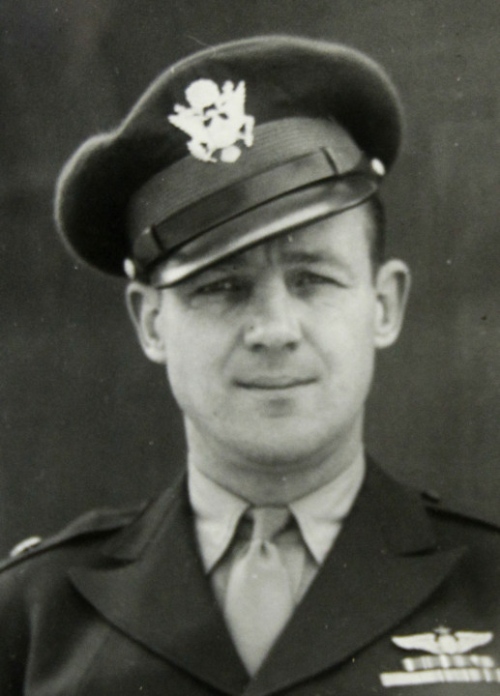
The bombers in the 369th Bomb Group made a navigational error that forced them to break radio silence. This unfortunate group would now face the air defenses around Bucharest in addition to those at Ploesti. One bomber, Hell’s Wench, flown by Lt. Col. Addison Baker and co-piloted by Major John Jerstad, was hit by flak three miles from their target refinery. Rather than turn for home or seek a belly landing as other wounded Liberators had, Baker and Jerstad continued to lead their formation towards the Columbia Aquila refinery. After leading their formation over the target, the two pilots pulled back on the controls to gain altitude. The entire crew, even the two that managed to bail out, perished as Hell’s Wench plummeted to the earth below. For their leadership and determined actions, Baker and Jerstad would later posthumously receive the Medal of Honor.
Meanwhile, other US bomb groups were reaching their designated targets. Col. John Kane, commander of the 98th Bomb Group, and Col. Leon Johnson, commander of the 44th Bomb Group, led their remaining bombers towards the Astra Romana, Columbia Aquila, and Creditul Minier refineries. With the Germans and Romanians already on high alert, the bombers in these two groups encountered a hail of flak and shell. Despite the growing losses, the two commanders continued through the smoke and fire. Holding their formations together, both groups delivered their bombs over their targets. Kane and Johnson would both survive the raid and later be awarded the Medal of Honor for their steadfast leadership in this hour of peril.
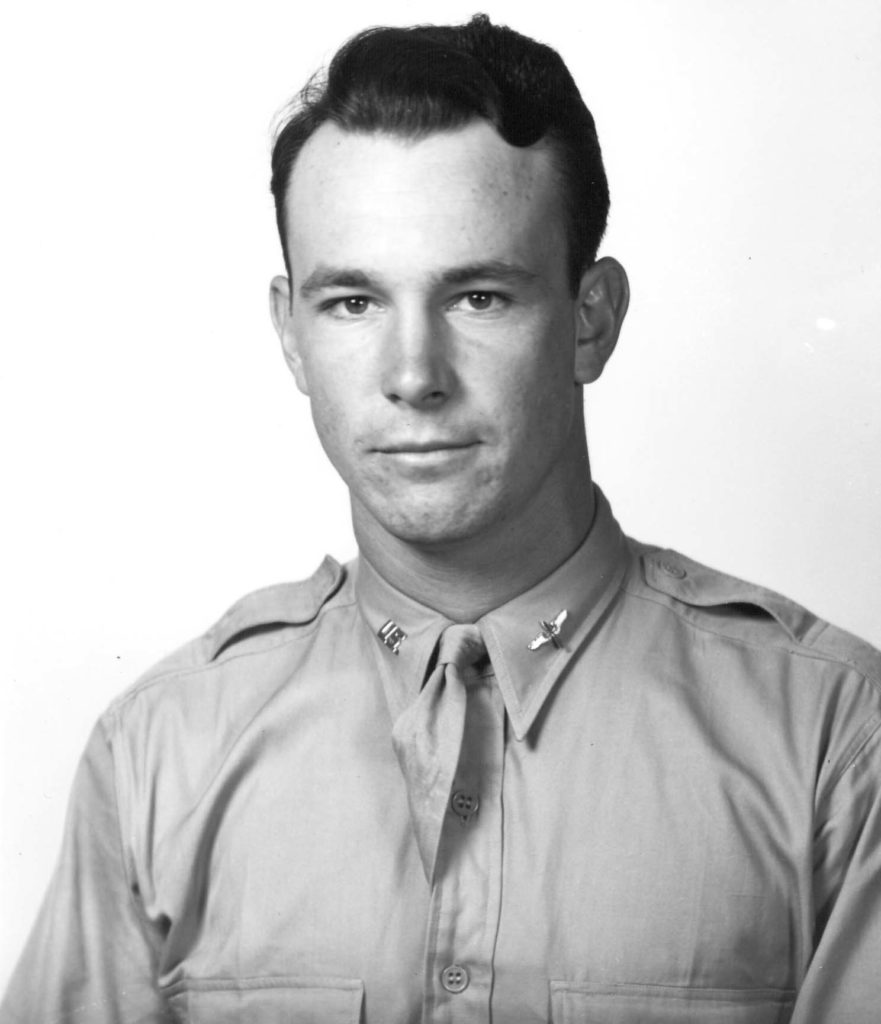
Weaving through the columns of fire and smoke, the last wave of US bombers to reach the Ploesti area were Liberators from the 389th Bomb Group. Their bombs fell on the Steaua Romana refinery and put it out of action for the rest of the war. The 389th lost four of its Liberators over the target area. One of those planes was piloted by 22-year old 2nd Lieutenant Lloyd Hughes. Hughes, who grew up in Texas and was a part of Texas A&M’s Corps of Cadets, flew Eager Eagle just thirty feet over the target. His Liberator was hit several times by flak as it made its way towards the target. Despite the apparent damage, Hughes refused to pull away. After delivering his bombs, Hughes struggled to control his stricken bomber. With one of his wings ablaze in flames, Hughes sought to land the bomber in a dry riverbed, but the plane caught a wingtip and cartwheeled as it struck the ground. Remarkably, two of Eager Eagle’s gunners would survive the crash and came to owe their lives to their young pilot’s actions. For his intrepid determination and sacrifice, Hughes would posthumously receive the Medal of Honor.
Those bombers that survived the attack on the refineries turned for the long journey home. But before they could escape, the ragged formations were assailed by German Bf-109s and Romanian Avia B-534 fighters. With no fighter escort to help them, many more of the survivors were shot down.
“Bloody Sunday”
The raid on Ploesti would be a costly one, indeed. Of the 177 Liberators involved in the raid, only 88 of them would return to Libya. One B-24 Liberator returned with more than 360 bullet holes in it. 310 US airmen would be killed in this raid, 108 were captured by the Axis, and another 78 landed in neutral Turkey and were interned – an awful price to pay for just one raid.
The five bomb groups had placed a good number of their bombs on the vulnerable oil facilities in and around Ploesti. The Allies believed that they had knocked out 40% of the refineries’ production. But in reality, several refineries were not hit, and others that were damaged were quickly repaired. The fact that oil output just a few weeks after the raid was actually higher than before the attack has led many to see “Bloody Sunday” as a strategic defeat for the American strategic bombers. Despite the unfavorable outcome, the bomber crews’ courageous actions would be long remembered, and the five Medals of Honor awarded for this one raid was the most awarded for any single bomber mission in American history.
